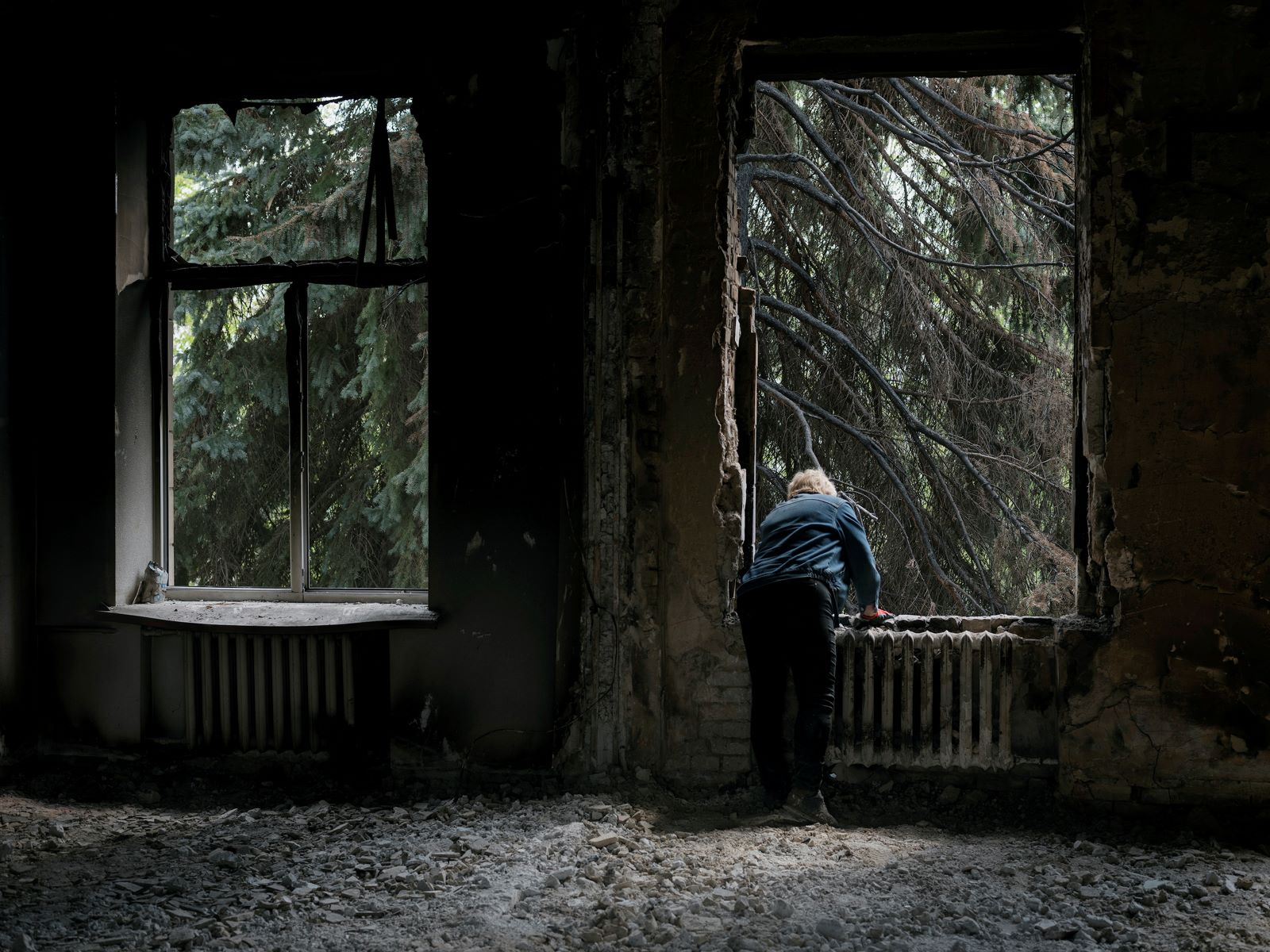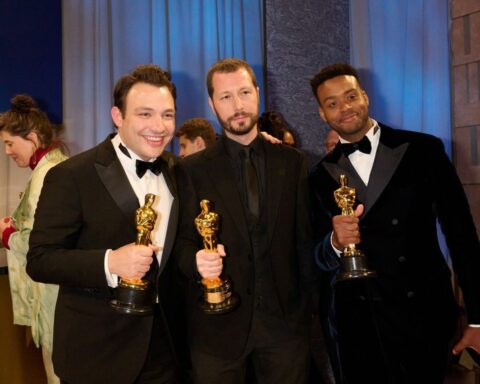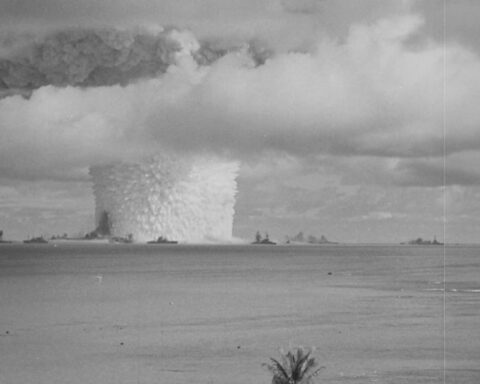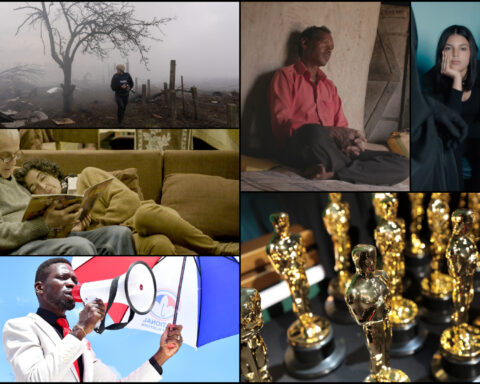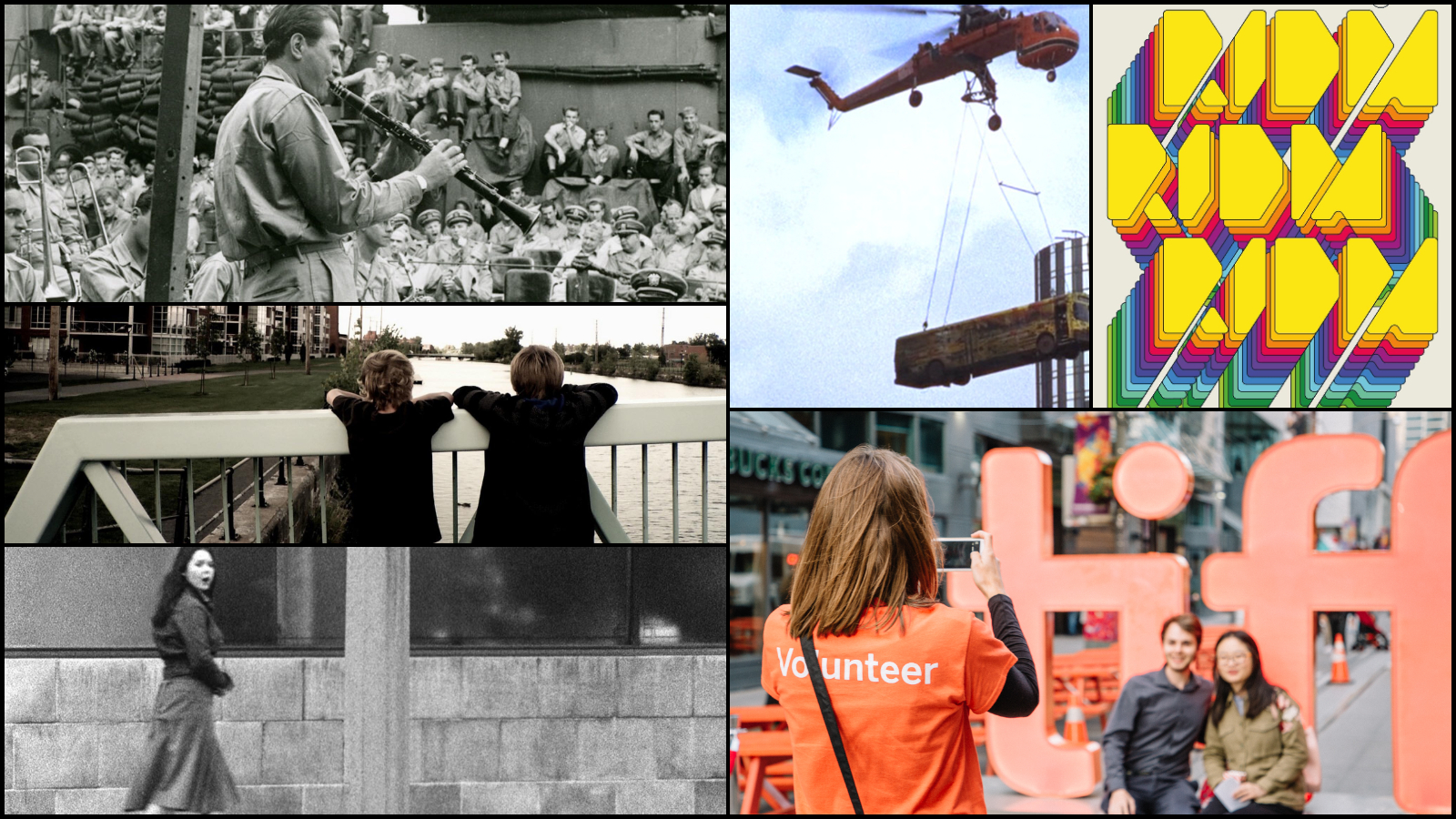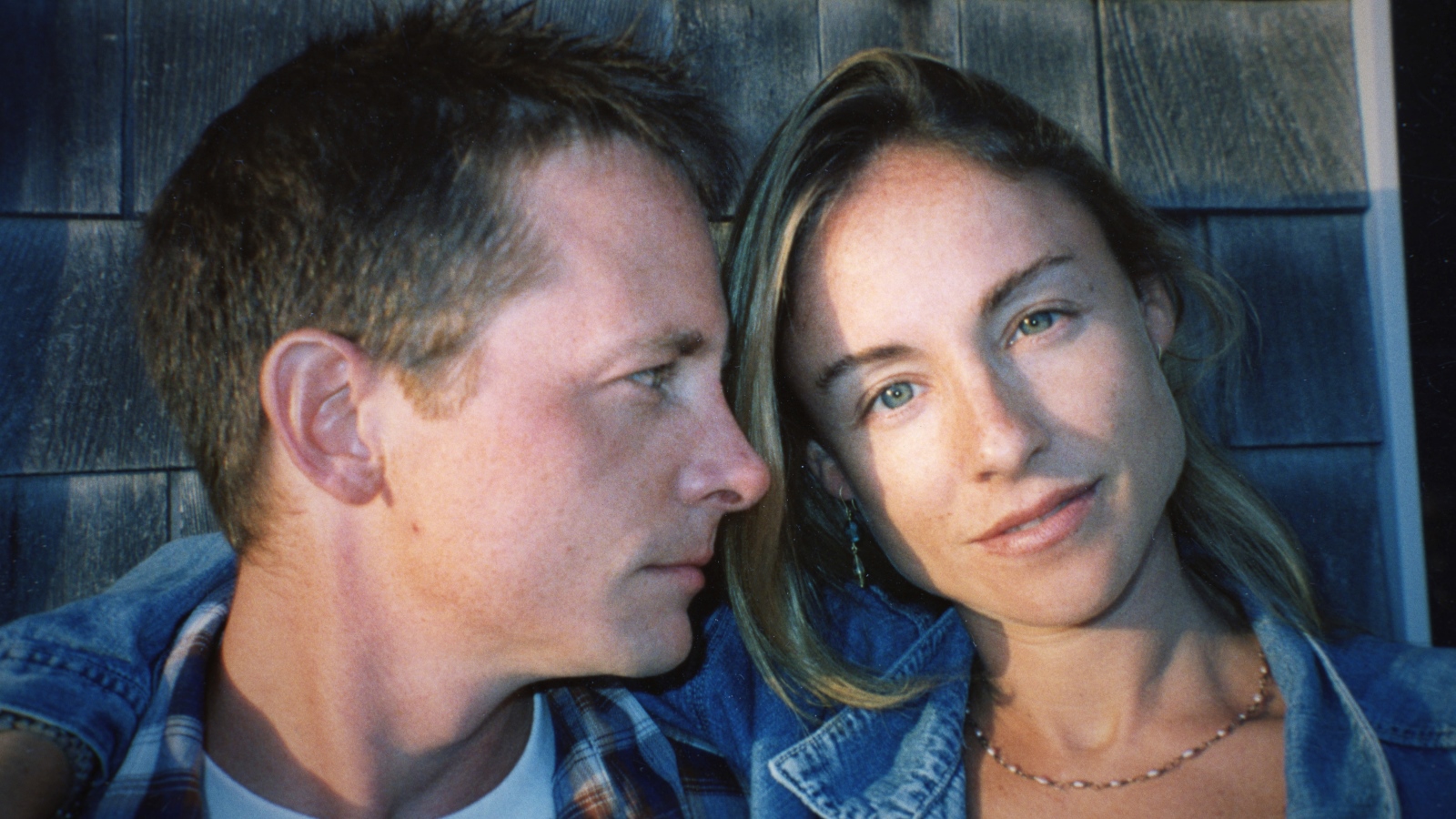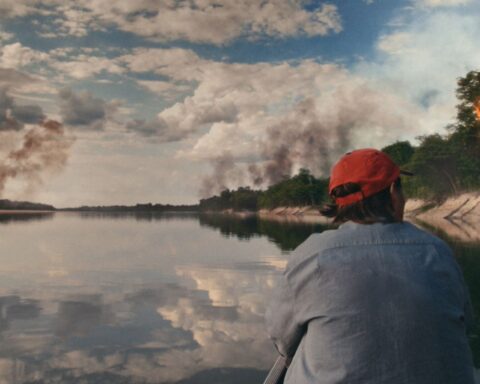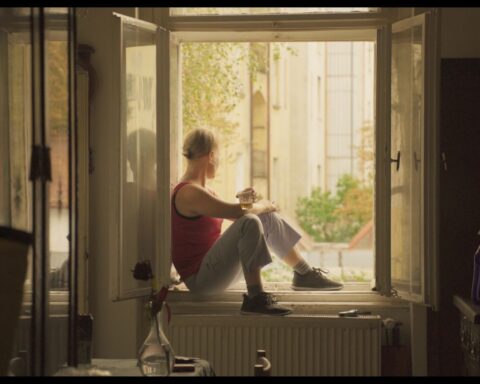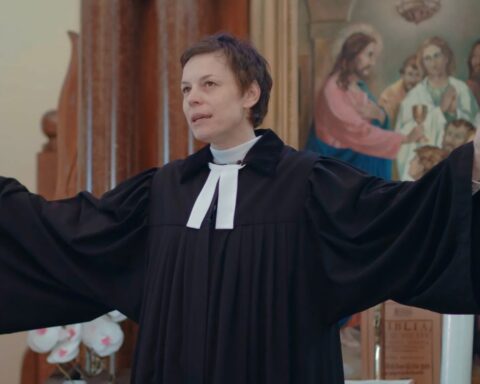In May 2021, members of the Toronto Film Critics Association (TFCA) received an invitation from the organizers of the Kyiv Critics Week for a cultural exchange: We would provide a list of Canadian films from which they would pick three, and we in turn would select three Ukrainian works from a shortlist. We were introduced to our colleagues on the other side of the world via a virtual visit to Ukraine.
The film I chose to discuss in our meeting with the Ukrainians was Rhino (2021), a dark, provocative, brutally bleak drama about a gangster’s rise and eventual fall. The backstory was as fascinating as the film. Director Oleh Sentsov had been arrested in 2014 while protesting in Crimea under spurious charges of “plotting terrorist attacks.” Upon his release, he set his sights on telling this morally ambiguous tale of the so-called “wild ’90s” of post-Soviet Ukraine, where previously sacrosanct rules ceased to matter and animalistic toughness was required to survive.
The film’s lead, Serhii Filimonov, was a veteran of the mid-decade war and a leader in the Azov group, a far-right paramilitary organization that borrows iconography and ideology from dark sources. Some people consider it a neo-Nazi movement. This element complicated the film’s perception, particularly for those outside Ukraine, and while the film premiered at Venice, no major North American festivals programmed this provocative and remarkable tale, even those that campaigned for Sentsov’s release from prison.
Our virtual Q&A was in fall 2021. The shadow of Crimea’s annexation, Sentsov’s prior arrest, Filimonov’s past, and the continued unrest in the Donbas were very much in mind. Despite the slight lag in our conversation and the discomfiting vision of my face looming Big Brother-like on the cinema screen in Kyiv, we managed to have a polite chat. While rumours of troop buildups on the Russian border had yet to reach me, there was a sense of growing tension during the period in which we screened the film. Rhino illustrates the chaos after the collapse of the Soviet Union, a dark period that continues to fuel Russian narratives about contemporary Ukraine. This makes the moral ambiguities of Sentsov’s film that much more subtle, and perhaps difficult to navigate for those unfamiliar with the competing narratives. While we could not know how the brutal violence of the film would foreshadow what was soon to come, it was impossible for me not to think of Sentsov’s drama when the chaos and brutality escalated dramatically in the region mere months later.
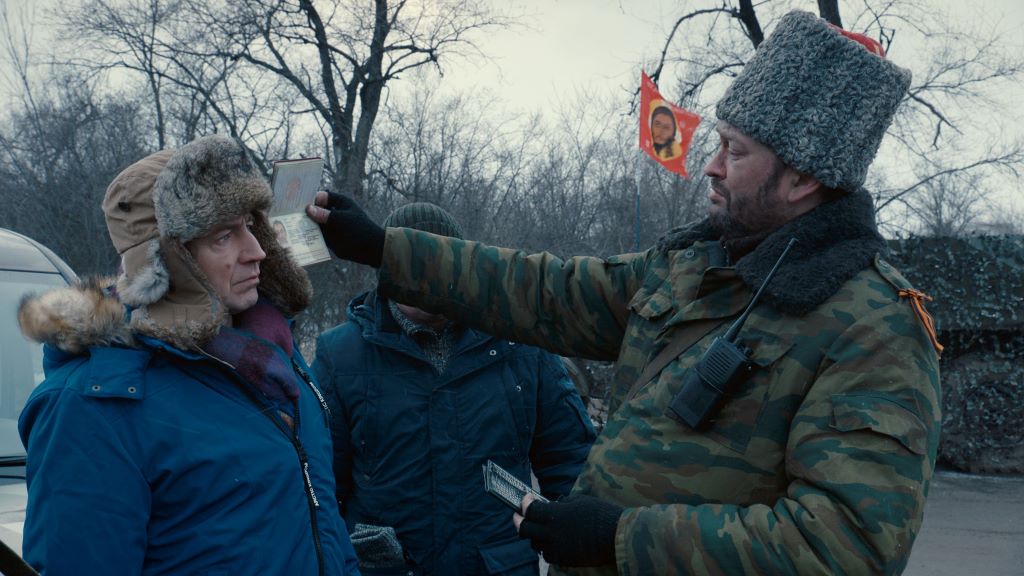
I first heard the word “Donbas” at Cannes in 2018, where Sergei Loznitsa took the best director award in the Un Certain Regard section for his film Donbass (an alternate English spelling for the name of the eastern Ukrainian region that is currently at the centre of the conflict). Loznitsa’s work powerfully illustrates how the mechanism of media obfuscation is used as a weapon of warfare. Documentary footage is shaped to craft polemical, even propagandistic elements by those wishing to reshape or erase history. The film’s acidic, blackly comic take on truth telling continues to affect me years later.
By January 2022, the tensions in the region were even more overt, making my attendance at a screening of Klondike at Sundance all the more resonant while thinking of my new Ukrainian friends. Maryna Er Gorbach’s exceptional film is set on the Ukraine-Russian border in the summer of 2014, with the circumstances around the downing of an airplane central to this tale of internecine brutality. While formally a fiction film, it’s clearly drawn from the events surrounding the downing of Malaysia Airlines Flight 17 (MH17). The film precisely and chillingly navigates the savagery and moral ambiguity that rises from conflict. Despite being a drama, it served as a primer for the tensions that erupted shortly after the Sundance premiere, emulating the way that often only documentaries capture the fundamental and complex truths of a situation.
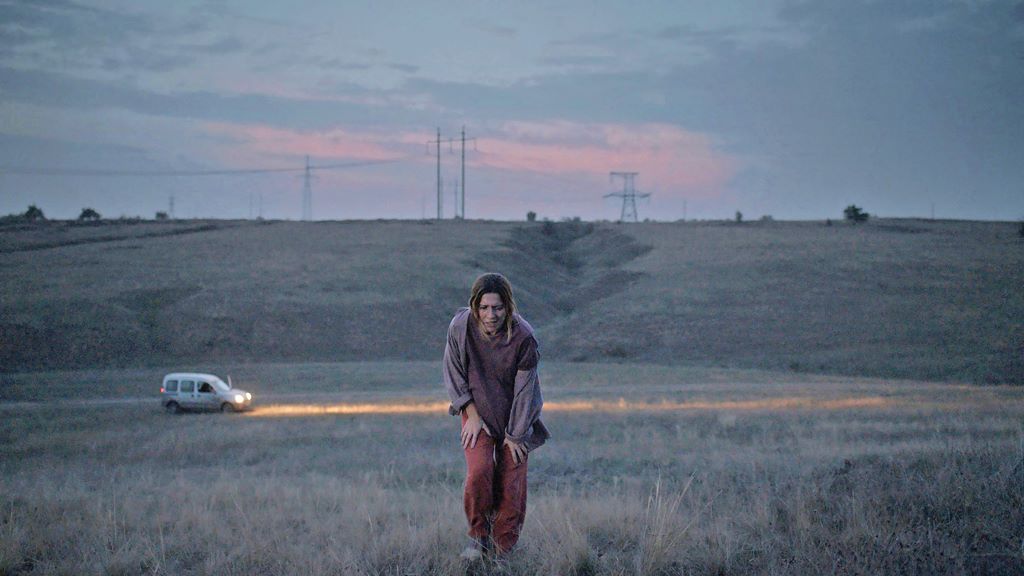
Mere weeks after I spoke on Zoom with an audience in Kyiv, the situation on the ground changed fundamentally. Russian tanks rolled into Ukraine in a massive sweep from three sides, coming as close to a dozen kilometres away from where Serhii Ksaverov, critic and curator of the Kyiv Critics Week, was sheltering. Since that time, we have been in regular conversation, discussing everyday trivialities and checking in on one another, but also keeping track of deeper questions such as how the very act of watching films has changed.
When I began to view documentaries for this POV survey, Serhii and I discussed at length how these three dramas—Donbass, Rhino, and Klondike—have fundamentally shaped my perspective on the tragic situation in his country. All three films reflect the deep complexity of life in the region. In attempting to bring across to viewers the nuance and stark reality of the situation, each of these films finds, in fictionalized narrative, effective means of conveying context and subtlety and incorporating multiple perspectives—things with which the current crop of non-fiction films sometimes struggles. Such is the challenge of telling the story of a war during a war. It’s akin to staring at the world through a straw, narrowing one’s focus in order for the core elements of the historical truth to be captured for the world to witness.
The first documentary I saw that tackled the current phase of the conflict was released in May 2022 at Cannes, just weeks after the filmmaker, Mantas Kvedaravičius, was killed while shooting the film. Mariupolis 2 was presented as a sequel to the director’s 2016 film, a well-crafted and probing documentary that provided a fascinating and intimate portrait of a city slowly recovering after the upheavals that began in 2014. Kvedaravičius had only just begun shooting when his life was cut short, and while his editor and widow crafted a posthumously completed film that feels both experimental and sobering, it’s hard not to see almost every element as fundamentally unfinished, like scraps of paper from an outline being presented as a novel.
I had hoped that Kvedaravičius’s death would bring more attention to the prior film, which was practically ignored during its release. While the one made while the director was alive slipped by major festivals, his messier, partially completed work garnered a world premiere at Cannes and screened at doc events around the world. Programmers were hungry to showcase up-to-the-minute stories from the Ukrainian front. It’s cynically said that the death of an artist is good for business, and in death, Kvedaravičius started a wave of stories from the region.
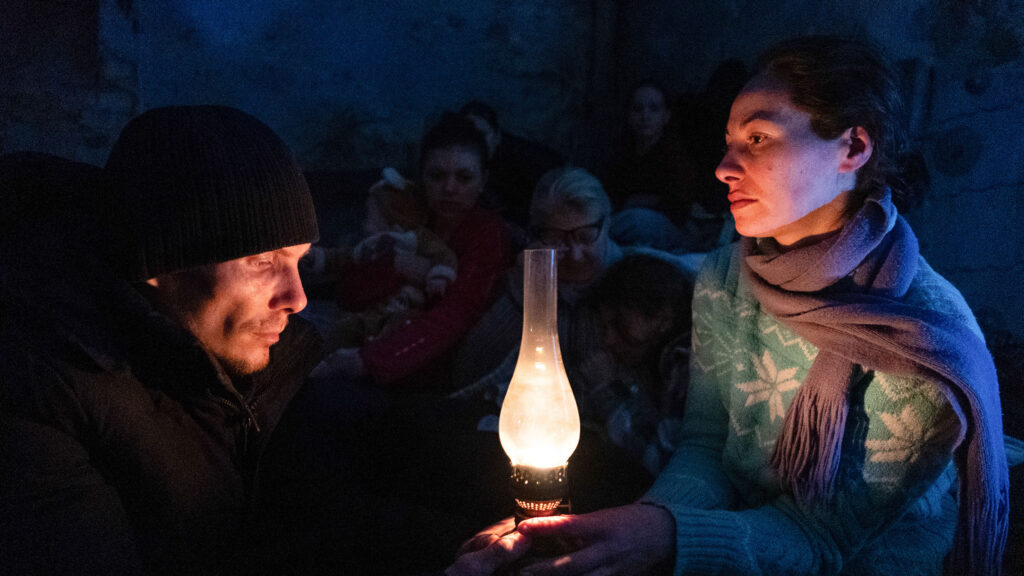
I thought a lot about Kvedaravičius when watching Mstyslav Chernov’s extraordinary 20 Days in Mariupol (2023), a journalistically significant film that provides unique insight not only into the events on the ground, but also into how images are repurposed and repackaged into news broadcasts, forming the first draft of history. The film follows Chernov, an Associated Press videographer, as he struggles to capture the scope of what’s taking place in the city— sometimes taken as an intruder, sometimes as a welcomed witness—and get his images transmitted to the outside world.
The film had a tremendous effect on me, and I asked Ksaverov to watch it and give me his take. “We live in the social environment where you become accustomed to other people’s suffering,” Ksaverov told me. “On the one hand, we want to encourage people to film so that everybody knows what’s happening. On the other hand, there’s the feeling that people are just selling our suffering.”
Ksaverov believes that “this urge to show is very natural,” but that it’s all perhaps for a futile cause. “You start to think about what good watching these films will do,” he argues. “Simply being a watcher of other people’s suffering has no repercussion for those on the ground. It’s just news, it’s just media, it’s just information.” While he was used to seeing these images from places like Syria over the last decade, he admits that “to have your own suffering become an object of someone’s entertainment is quite painful.”
Over the last year, however, it hasn’t been the harrowing images from documentaries that he found difficult to stomach. It was the more superficial cinema that didn’t work for him. “Every film has some sort of social outlook,” Ksaverov says. “For example, I have had trouble watching comedies, because they usually make their point through some hyperbole. I especially had a hard time with something like Everything Everywhere All at Once. For me, it was the zenith of mindless celebration culture, very indulgent and too escapist.”
Ksaverov is still coming to terms with being the new centre of attention. “We programmed our festival last year and selected Limbo. It’s a British film about refugees who are waiting for their papers to be approved. As I discussed it with my colleagues, [I realized that] people are going to be making films like this about us very soon!”

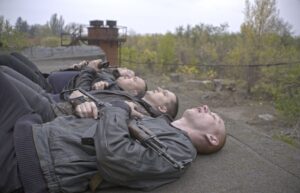
As for how films in general shifted for him, he looked to the past and saw them in very different ways. During an active war, “you get to be very aware of several things and your interests are shifted. My viewpoint was directed towards re-evaluation of neo-realism as a cinema—not as an aesthetic tradition, but as an ideology to avoid links with fascism. Or, for example, some French films, which, until the end of the ’60s, primarily set France as a territory of victims of the war or those engaged in resistance. There was no talking about Vichy, or collaboration, etc. I always saw films through a political and social prism, but now it became heightened because you vividly see films as colonial practices, or [see how they] avoid certain themes and topics.”
A year later, dozens of films have provided unique perspectives on the conflict. Some are jingoistic, while others are more journalistically astute. They all use the broader effects of the Russian invasion to provide a canvas on which to tell their story. Yet like Ksaverov’s recognition of how post-war filmmaking in Europe simplified some of the more sordid elements within each nation, so do these docs and dramas turn highly complex situations into something more palatable and easier to convey. They provide glimpses that are both accurate and narrow, lacking the perspective that only time may bring.
Iron Butterflies (2023), Roman Liubyi’s poetic probing of the downing of flight MH17, feels significant in its attempt to offer a more complex perspective. On one level, it’s an account of the tribunal that sought out the facts of the case, but it echoes Klondike as well as Donbass, especially when we see the shift in Russian television “news,” altering the facts of the story almost in real time.
The film mixes in aesthetic flourishes, such as modern-dance sequences that might seem to some pointless or pretentious, while other viewers may be swept up by how the fluidity of motion further emphasises the surreality of the events, and the way in which the truth sways back and forth depending on who’s doing the telling. On the one hand, Iron Butterflies is highly informative and engaging; on the other, its aestheticization of the tragedy speaks to the impossibility of documenting horrifying events in a straightforward manner. One may require poetic devices to make sense of the tragic and incomprehensible.
There are plenty of Poles heading to their neighbouring country to capture the conflict. Few stories to emerge from this period are as compelling as the dryly titled In Ukraine (2023). The quotidian is presented in extraordinary ways in Piotr Pawlus and Tomasz Wolski’s film: We see a minivan pull up to a burned-out tank, a boisterous family emerging in order to take selfies or TikTok videos just as they would at any other tourist trap. Another memorable moment shows a charity worker pause while doling out food packages to mug for the press photographer. The argument she has with someone else in line who wants more than a fair share illustrates how the true character of people is revealed during such times.
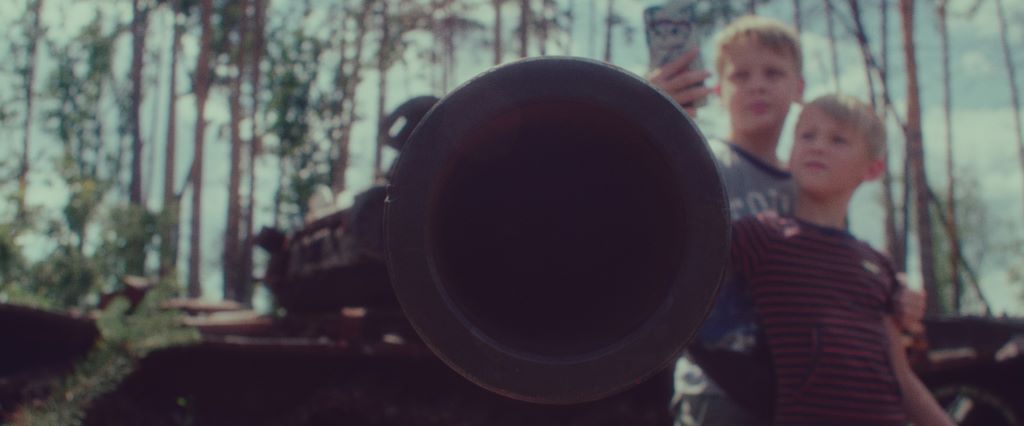
Mila Teshaieva and Marcus Lenz’s When Spring Came to Bucha (2022) is another work that focuses directly on the scars of conflict, traveling to the Kyiv suburbs that were for 30 days the site of sustained Russian occupation. The film acts as a witness to the cleanup after an apocalypse, the bodies still being packed up and identified, the war crimes investigators beginning their interviews to try and record what transpired. From booby traps in people’s backyards to blood-strewn mattresses in basements where prisoners were held, it’s a sobering gaze at a community in the early stages of rebuilding—cleaning up the rubble, burying the dead, mowing the lawn. At all moments we are reminded of Ukraine’s eastern regions, where occupation has been endured for much longer, and cameras aren’t always there to witness what’s taking place.
Alisa Kovalenko’s We Will Not Fade Away (2023) is itself a time capsule or ghost story of sorts, tracing the lives of five teenagers living in the Donbas region, which they refer to as the “asshole” of Ukraine, as they navigate their last years of high school and worry what the future will bring. What set out to be a tale of fresh youths heading to the Himalayas to expand their horizons turns into a memorial to lives that were once shaped by the complexities of adolescence. So much of what was captured in this doc has now been erased, and the locations for much of the film completely ravaged by unceasing bombardment, turning it into atragic testament to lovely adolescents denied their opportunities in life.
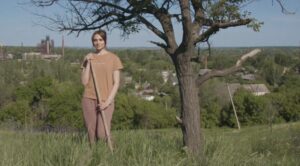
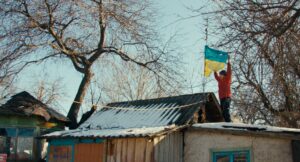
On its face, Kornii Hrytsiuk’s Eurodonbas (2022) provides necessary context to the history of eastern Ukraine. It valiantly attempts to correct an historical record abused under Soviet rule. The eastern portion of the country is rich in natural resources, making it central to many of the conflicts over the last century, from Soviet repopulation policies through to Hitler’s Barbarossa invasion and the current Russian incursion. The region was first industrialized in the late 19th century through Belgian investment, and the film uncovers architectural remnants of that period when Europe moved east, claiming this part of the world for modernization and industrial exploitation.
Hrytsiuk’s film is highly polemical with a clear agenda that feels at times propagandistic even as the broad facts are presented honestly. It’s impossible to see this history divorced from contemporary political machinations involving the European Union, while we’re treated to mere glances at a complex story spanning the last several centuries. We see glimpses of the internecine violence, the role of the Ukrainian church, and the mechanism of a supposed proletarian paradise that never approached the Marxist–Leninist dream. It’s all done through a lens to emphasise that the idea of the inherent Russianness of the region, and its indebtedness to the Soviet Union for its industrial development, are mere fantasies of Putin.
Nadia Parfan’s personal and poetic short I Did Not Want to Make a War Film (2022) illustrates the ambivalence of those caught on the outside wishing to return to their country to do…something? Whether it’s checking in on a friend’s bombed-out apartment or simply watering a tamarind tree, Parfan captures the palpable desire to return to a normalcy that has been stripped away. Once again, life seems relatively stable as presented here. One is able to witness the scars of war and then to escape, if briefly, into some sort of everyday life.
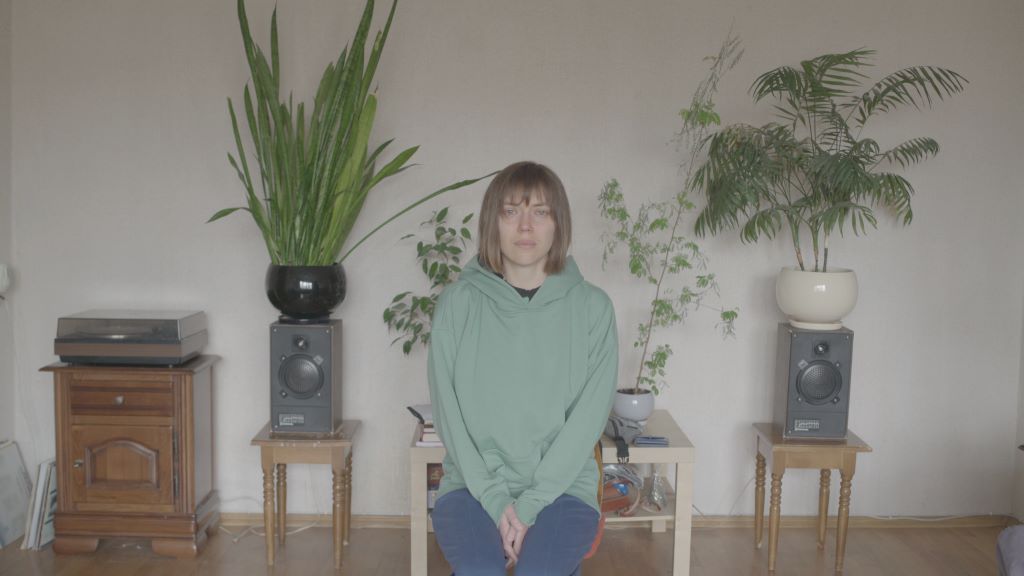
The filmmakers making these important new docs share a desire to honour the fundamental aspects of Ukrainian culture, the very thing under attack by an enemy that wishes to erase its uniqueness and batter it into submission. This threat makes these stories more powerful and profound, and the necessity of telling them more urgent.
By telling these stories, Ukrainians are offering a lens through which we can view their struggles and achievements. These films helped me to understand and sympathize with the people in the country. Whether these works succeed artistically or not may be moot, because they’re trying to tell the stories of a people in crisis, a factor that would seem to trump criticism. That, for now, may be what’s required: to simply tell the story of Ukraine and its people to the world.




